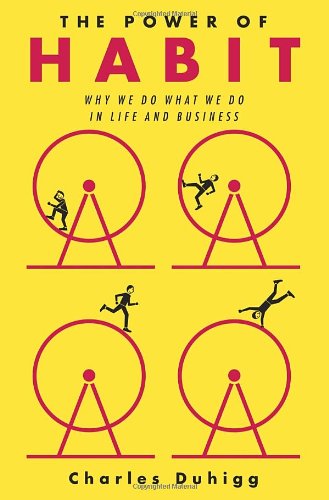 A few months ago, I assigned a book to my senior managers — Charles Duhigg’s “The Power of Habit.” They smiled wanly as they accepted the books, prepared to slog through a business book with little bearing on their real lives. We were all pleasantly surprised — the book turned out to be more interesting and potentially transformative than any of us expected.
A few months ago, I assigned a book to my senior managers — Charles Duhigg’s “The Power of Habit.” They smiled wanly as they accepted the books, prepared to slog through a business book with little bearing on their real lives. We were all pleasantly surprised — the book turned out to be more interesting and potentially transformative than any of us expected.
The premise is simple — we create and maintain habits to conserve mental energy so we can think about more complex and difficult issues; these habits can be good or bad or neutral, but once established, they never really leave us, but lurk, waiting to be rediscovered; and creating habits is straightforward, but choosing which habits to create isn’t.
Let’s talk about creating habits. The “habit loop” consists of a cue, a routine, and a reward. It’s that deceptively simple. Your alarm goes off in the morning (cue), you shower, eat breakfast, and brush your teeth (routine), and you get out the door on time and without forgetting anything (reward).
Tooth brushing provides one of the more interesting stories about how each element comes into play. About a hundred years ago, there was no cue for brushing your teeth. Teeth were not thought about in that manner. But then it occurred to some enterprising business people that the film that builds up on your teeth could be a cue for brushing. Nice thought, but how do you create a routine? Well, you need to create a reward. The nice people at Pepsodent were the first to hit on a reward — add mint flavor to the toothpaste. Mint has a peculiar blend of a pleasant taste and the ability to change your mouth’s pH in just the right way to make it feel clean. This “clean” feeling (that “just brushed” feeling) became the reward. Soon, through advertising and product usage, the cue (sticky, coated teeth) and the reward (fresh, minty mouth) had created the routine of brushing your teeth.
Habits are also never forgotten. You can change them, but the pathways of habits are like grooves worn into your brain, and your life trajectory easily slips back into the ruts if you allow. Smoking is not the only thing you have to quit every day. Every bad habit you have to quit every day.
Perhaps the most riveting story of many in this book is the story of Alcoa. A new CEO took the helm, and at a meeting to introduce him to investors, the normal expectations prevailed — here is a person who will inspire us, promise us increased sales, a stronger company, and long-term vitality. What did he deliver? A speech about the importance of workplace safety. A hush fell. So did the stock price.
But the new CEO turned out to have an uncanny appreciation of how to pick what is termed a “keystone habit” — a habit that, if embraced, changes everything. In this case, the habit of workplace safety aligned the interests of employees (who didn’t want to get injured), management (who hated to have to deal with missing staff and the paperwork around injury claims), and investors (who paid for injury claims and downtime).
Within a few years, Alcoa — a company working with sharp metal, molten metal, and tons of metal — was a safer place to work than a contemporaneous graphic design company. In addition, the efficiencies created by making the workplace safer along with less workman’s comp and less downtime had driven profits up significantly. That’s the power of a keystone habit.
However, selecting the right keystone habit is difficult. Put the right one in place, and it’s transformative. Pick poorly, and it won’t make much of a difference.
After reading the book, we agreed on one for our organization. I won’t tell you what it is — that might give away a little bit of a competitive advantage — but I can tell you that it’s already delivering benefits.
And making progress is a habit I like.
Discussion
1 Thought on "Book Review: "The Power of Habit: Why We Do What We Do in Life and Business""
If this book helped you then it must be helpful but it sounds like a misapplication of behaviorism or a really bad metaphor. Routines, procedures, workflows, rules and such like are not habits. They are designed to operate in specific situations but these are not cues. It sounds like it is trading on the rhetorical power of “bad habits”, perhaps by invoking guilt.
A significant fraction of management science is devoted to the analysis, design and refinement of these sorts of behavior systems. In my taxonomy of confusions 42 of the 126 confusions are about rules and procedures. (See http://scholarlykitchen.sspnet.org/2013/02/05/a-taxonomy-of-confusions/.) Calling these complex behavior patterns habits and responses to cues makes them seem mindless but they are very far from that. They are typically very rational.
I prefer the Power of Hobbits.



